Field report: Riyadh
5 May 2023

Register for the MEED.com guest programme
Contracts worth over $2.7bn have been awarded in Riyadh Province so far this year.
MEED field researchers visited Riyadh in mid-April to monitor the progress on construction projects including Diriyah Gate, King Salman International Park and Riyadh Sports Boulevard.
The team also called in on two of Saudi Entertainment Ventures' (Seven's) entertainment complexes and several National Housing Company housing schemes, among other projects.
At the Diriyah Gate project, construction works are progressing on the digital arts centre Diriyah Art Futures and Heritage Five Star hotel in Samhan district.
MEED researchers were able to get visuals of Diriyah Gate's now-completed restaurant complex, Bujairi Terrace.

Opened in December 2022, Bujairi Terrace comprises 21 restaurants over a 15,000 square-metre area
Elsewhere, construction works have started on the Ministry of Culture's headquarters building at Diriyah, while the site preparatory works are under way at the Northern Cultural District P3 car park, where the ground-breaking ceremony took place recently.
 Local/Chinese team begins underground main spine tunnel roundabout base slab works
Local/Chinese team begins underground main spine tunnel roundabout base slab works
Structural works are under way at Saudi Electricity Company's Diriyah 380/132/13.8kV substation and the super basement project, which WeBuild is delivering.

Diriyah Development Company's three-floor super basement car park will serve the mixed-use Diriyah Square district, which will include leisure and entertainment, hotels, retail, grade A offices, the King Salman Grand mosque and residential units designed in the traditional Najdi architectural style
KING SALMAN INTERNATIONAL PARK
Structural works are progressing well at the Royal Art Complex, the single biggest project in execution by value at King Salman International Park so far. Modern Building Leaders won the contract, worth $1.3bn, to build the project in 2022.

In addition to the Royal Art Complex, the 1,300-hectare masterplanned King Salman Park project includes a national theatre, museums, galleries, a golf course, and spaces for commercial, hospitality and residential components
Construction on the main tunnels and bridges project continues, with the bridge structure now in place. A joint venture (JV) of Consolidated Contractors Company and El-Seif Engineering Contracting Company is executing the project, which is scheduled for completion in the fourth quarter of 2024.

King Salman Park was launched by King Salman in March 2019, alongside the Green Riyadh, Riyadh Art and Riyadh Sports Boulevard projects
The construction works are ongoing at almost all of the packages for Riyadh Sports Boulevard.
The projects currently in execution at the Riyadh Sports Boulevard include King Abdul-Aziz underpass package 8 and Abu Bakr underpass package 9, Zone 1A, Zone 1B, Zone 2A, Zone 5A, Zone 6: Package A, B, C, D, E and Cycling Bridge.

Riyadh Sports Boulevard – Package 5 Arts District. There are eight districts in total, with districts for entertainment, athletics and sports also planned
The structural works are under way at Seven's Al-Hamra entertainment complex (Exit 10), for which Al-Futtaim Engineering has been appointed as the mechanical, electrical and plumbing (MEP) contractor.
Exit 10 is at the most advanced stage of construction out of the 21 planned entertainment complexes in 14 cities across the kingdom.
Meanwhile, early works proceed apace at Seven's Al-Nahdah entertainment complex (Exit 15) project. Consolidated Contractors Company is delivering the project.

Seven is owned by the Public Investment Fund and was formed in December 2017 as part of Riyadh’s push to localise Saudi spending on entertainment under the mandate of Vision 2030
Elsewhere in Riyadh, the client is delivering the housing units for Roshn's Sedra District community homes phase 1A, package 1. Indian contractor Shapoorji Pallonji is carrying out the construction works, which are in the finishing stages.

Located northeast of the Saudi capital, Sedra will consist of over 2,100 residential units, along with public parks, entertainment areas, retail, coffee shops and restaurants, community centres, schools, sports facilities and health care facilities
National Housing Company (NHC) is well on track with building its housing schemes in Riyadh. The infrastructure works are currently under way at the Dahiyat al-Fursan phase 1 project in the north of Riyadh. The work is being carried out by Al-Omaier Trading & Contracting.
Likewise, construction works are at advanced stages at NHC’s Al-Mashraqiya housing complex as well as for several of the packages at the Murcia complex, most notably Narges View, Rabieh Housing, Saraya al-Gwan, Asalah al-Gwan, Rawa Housing and the Al-Muhannadiya complex.

National Housing Company's Al-Mashraqiya housing complex, where construction is at an advanced stage
The foundation works are in progress at Shomoul Holdings’ The Avenues Riyadh project.
The project is one of the largest commercial malls in the Middle East and includes multiple districts such as Prestige, Grand Avenue, The Souk, The Mall, Electra, Oasis, Grand Plaza, The Forum and The Walk. Nesma & Partners won the project's main construction contract, worth $1.76bn, in 2021.
There is no construction activity at the Mall of Saudi project site. MEED exclusively reported this week that the Dubai-based developer Majid al-Futtaim (MAF) had put the plans for its estimated SR6bn ($1.6bn) project in Riyadh on hold.
By Yasir Iqbal, research manager MEED.com | MEED Projects | MEED Insight
Exclusive from Meed
-
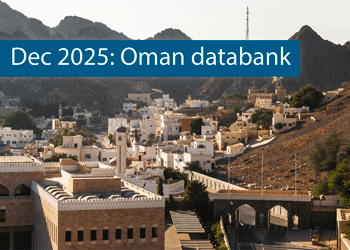 Oman’s growth forecast points upwards
Oman’s growth forecast points upwards24 December 2025
-
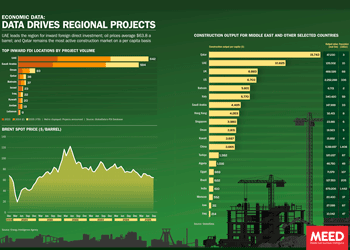 December 2025: Data drives regional projects
December 2025: Data drives regional projects23 December 2025
-
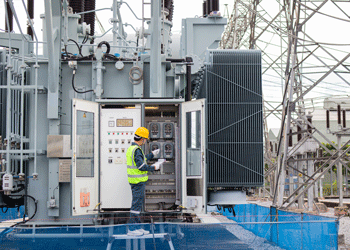 Local firm bids lowest for Kuwait substation deal
Local firm bids lowest for Kuwait substation deal22 December 2025
-
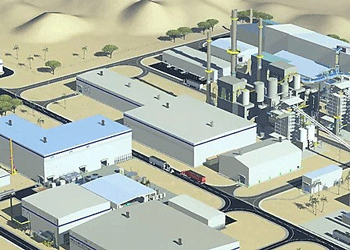 Saudi-Dutch JV awards ‘supercentre’ metals reclamation project
Saudi-Dutch JV awards ‘supercentre’ metals reclamation project22 December 2025
-
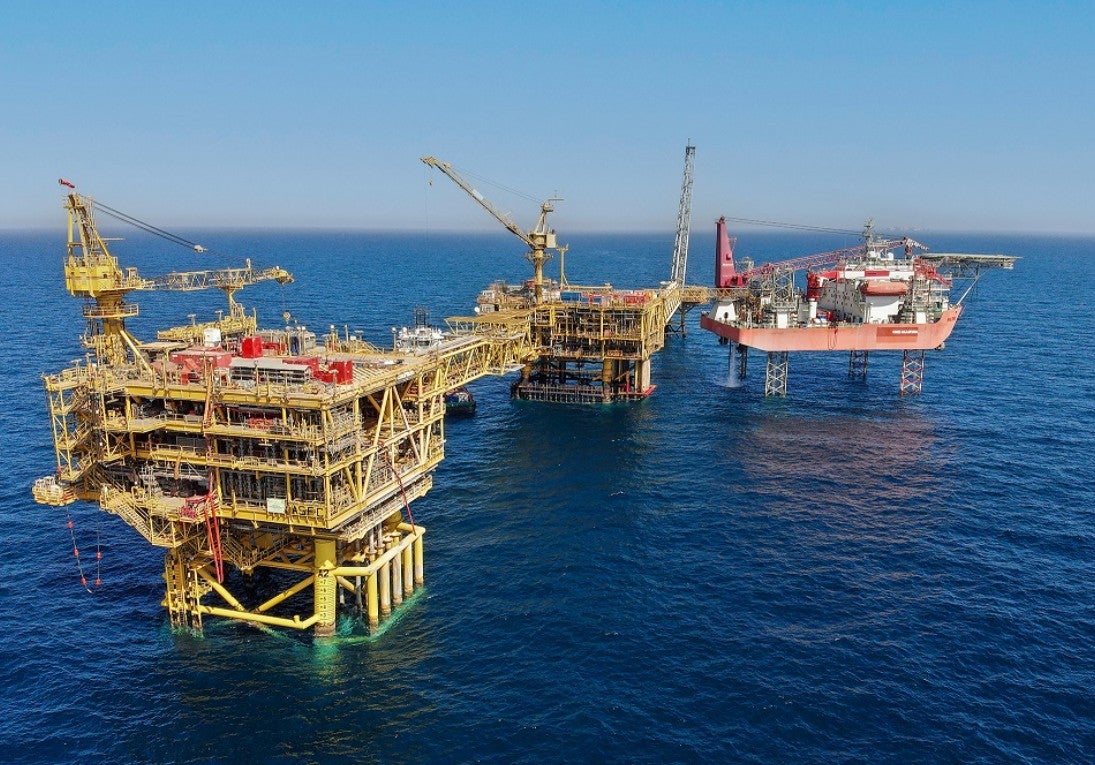 QatarEnergy LNG awards $4bn gas project package
QatarEnergy LNG awards $4bn gas project package22 December 2025
All of this is only 1% of what MEED.com has to offer
Subscribe now and unlock all the 153,671 articles on MEED.com
- All the latest news, data, and market intelligence across MENA at your fingerprints
- First-hand updates and inside information on projects, clients and competitors that matter to you
- 20 years' archive of information, data, and news for you to access at your convenience
- Strategize to succeed and minimise risks with timely analysis of current and future market trends

Related Articles
-
 Oman’s growth forecast points upwards
Oman’s growth forecast points upwards24 December 2025

MEED’s January 2026 report on Oman includes:
> COMMENT: Oman steadies growth with strategic restraint
> GVT & ECONOMY: Oman pursues diversification amid regional concerns
> BANKING: Oman banks feel impact of stronger economy
> OIL & GAS: LNG goals galvanise Oman’s oil and gas sector
> POWER & WATER: Oman prepares for a wave of IPP awards
> CONSTRUCTION: Momentum builds in construction sectorTo see previous issues of MEED Business Review, please click herehttps://image.digitalinsightresearch.in/uploads/NewsArticle/15306449/main.gif -
 December 2025: Data drives regional projects
December 2025: Data drives regional projects23 December 2025
Click here to download the PDF
Includes: Top inward FDI locations by project volume | Brent spot price | Construction output
MEED’s January 2026 report on Oman includes:
> COMMENT: Oman steadies growth with strategic restraint
> ECONOMY: Oman pursues diversification amid regional concerns
> BANKING: Oman banks feel impact of stronger economy
> OIL & GAS: LNG goals galvanise Oman’s oil and gas sector
> POWER & WATER: Oman prepares for a wave of IPP awards
> CONSTRUCTION: Momentum builds in construction sectorTo see previous issues of MEED Business Review, please click herehttps://image.digitalinsightresearch.in/uploads/NewsArticle/15306140/main.gif -
 Local firm bids lowest for Kuwait substation deal
Local firm bids lowest for Kuwait substation deal22 December 2025
The local Al-Ahleia Switchgear Company has submitted the lowest price of KD33.9m ($110.3m) for a contract to build a 400/132/11 kV substation at the South Surra township for Kuwait’s Public Authority for Housing Welfare (PAHW).
The bid was marginally lower than the two other offers of KD35.1m and KD35.5m submitted respectively by Saudi Arabia’s National Contracting Company (NCC) and India’s Larsen & Toubro.
PAHW is expected to take about three months to evaluate the prices before selecting the successful contractor.
The project is one of several transmission and distribution projects either out to bid or recently awarded by Kuwait’s main affordable housing client.
This year alone, it has awarded two contracts worth more than $100m for cable works at its 1Z, 2Z, 3Z and 4Z 400kV substations at Al-Istiqlal City, and two deals totalling just under $280m for the construction of seven 132/11kV substations in the same township.
Most recently, it has tendered two contracts to build seven 132/11kV main substations at its affordable housing project, west of Kuwait City. The bid deadline for the two deals covering the MS-01 through to MS-08 substations is 8 January.
https://image.digitalinsightresearch.in/uploads/NewsArticle/15305745/main.gif -
 Saudi-Dutch JV awards ‘supercentre’ metals reclamation project
Saudi-Dutch JV awards ‘supercentre’ metals reclamation project22 December 2025
The local Advanced Circular Materials Company (ACMC), a joint venture of the Netherlands-based Shell & AMG Recycling BV (SARBV) and local firm United Company for Industry (UCI), has awarded the engineering, procurement and construction (EPC) contract for the first phase of its $500m-plus metals reclamation complex in Jubail.
The contract, estimated to be worth in excess of $200m, was won by China TianChen Engineering Corporation (TCC), a subsidiary of China National Chemical Engineering Company (CNCEC), following the issue of the tender in July 2024.
Under the terms of the deal, TCC will process gasification ash generated at Saudi Aramco’s Jizan refining complex on the Red Sea coast to produce battery-grade vanadium oxide and vanadium electrolyte for vanadium redox flow batteries. AMG will provide the licensed technology required for the production process.
The works are the first of four planned phases at the catalyst and gasification ash recycling ‘Supercentre’, which is located at the PlasChem Park in Jubail Industrial City 2 alongside the Sadara integrated refining and petrochemical complex.
Phase 2 will expand the facility to process spent catalysts from heavy oil upgrading facilities to produce ferrovanadium for the steel industry and/or additional battery-grade vanadium oxide.
Phase 3 involves installing a manufacturing facility for residue-upgrading catalysts.
In the fourth phase, a vanadium electrolyte production plant will be developed.
The developers expect a total reduction of 3.6 million metric tonnes of carbon dioxide emissions a year when the four phases of the project are commissioned.
SARBV first announced its intention to build a metal reclamation and catalyst manufacturing facility in Saudi Arabia in November 2019. The kingdom’s Ministry of Investment, then known as the Saudi Arabian General Investment Authority (Sagia), supported the project.
In July 2022, SARBV and UCI signed the agreement to formalise their joint venture and build the proposed facility.
The project has received support from Saudi Aramco’s Namaat industrial investment programme. Aramco, at the time, also signed an agreement with the joint venture to offtake vanadium-bearing gasification ash from its Jizan refining complex.
Photo credit: SARBV
https://image.digitalinsightresearch.in/uploads/NewsArticle/15305326/main.gif -
 QatarEnergy LNG awards $4bn gas project package
QatarEnergy LNG awards $4bn gas project package22 December 2025
QatarEnergy LNG, a subsidiary of state-owned QatarEnergy, has awarded the main engineering, procurement, construction and installation (EPCI) contract for a major package for the second phase of its North Field Production Sustainability (NFPS) project.A consortium comprising the Italian contractor Saipem and state-owned China Offshore Oil Engineering Company (COOEC) has secured the EPCI contract for the COMP5 package. The contract value is $4bn, with Saipem declaring its share to be worth $3.1bn.
Milan-headquartered Saipem said the contract will run for about five years. The scope of work comprises engineering, procurement, fabrication and installation of two compression complexes, each including a compression platform, a living quarters platform, a flare platform supporting the gas combustion system, and the related interconnecting bridges. Each complex will have a total weight of about 68,000 tonnes.
Offshore installation operations will be carried out by Saipem’s De He construction vessel in 2029 and 2030.
MEED previously reported that the following contractors submitted bids for the NFPS phase two COMP5 package:
- Larsen & Toubro Energy Hydrocarbon (India)
- McDermott (US)
- Saipem/China Offshore Oil Engineering Company (Italy/China)
QatarEnergy LNG, formerly Qatargas, is said to have issued the tender for the NFPS phase two COMP5 package in the first quarter of the year.
Contractors submitted technical bids for the COMP5 package in late June, while commercial bids were submitted by 8 October, as per sources.
Based upon initial evaluation of bids by QatarEnergy LNG, L&TEH has emerged as the lowest bidder for the COMP5 package, followed by McDermott, with the consortium of Saipem and COOEC in third place, MEED reported in late October.
In the weeks following that, the project operator is said to have engaged all bidders for a final round of negotiations, during which the consortium of Saipem and COOEC is believed to have “clinched the deal”, according to sources.
The detailed scope of work on the COMP5 package covers the EPCI work on the following:
- Two gas compression platforms, each weighing 30,000-35,000 tonnes, plus jacket
- Two living quarters platforms, plus jacket
- Two gas flare platforms, plus jacket
- Brownfield modification work at two complexes
NFPS scheme
QatarEnergy’s North Field liquefied natural gas (LNG) expansion programme requires the state enterprise to pump large volumes of gas from the North Field offshore reserve to feed the three phases of the estimated $40bn-plus programme.
QatarEnergy has already invested billions of dollars in engineering, procurement and construction works on the two phases of the NFPS project, which aims to maintain steady gas feedstock for the North Field LNG expansion phases.
The second NFPS phase will mainly involve building gas compression facilities to sustain and gradually increase gas production from Qatar’s offshore North Field gas reserve over the long term.
Saipem has been the most successful contractor on the second NFPS phase, securing work worth a total of $8.5bn.
QatarEnergy LNG awarded Saipem a $4.5bn order in October 2022 to build and install gas compression facilities. The main scope of work on the package, which is known as EPCI 2, covers two large gas compression complexes that will comprise decks, jackets, topsides, interconnecting bridges, flare platforms, living quarters and interface modules.
The gas compression complexes – CP65 and CP75 – will weigh 62,000 tonnes and 63,000 tonnes, respectively, and will be the largest fixed steel jacket compression platforms ever built.
Following that, Saipem won combined packages COMP3A and COMP3B of the NFPS project’s second phase in September last year.
The scope of work on the combined packages encompasses the EPCI of a total of six platforms, approximately 100 kilometres (km) of corrosion resistance alloy rigid subsea pipelines of 28-inches and 24-inches diameter, 100km of subsea composite cables, 150km of fibre optic cables and several other subsea units.
Separately, QatarEnergy LNG awarded McDermott the contract for the NFPS second phase package known as EPCI 1, or COMP1, in July 2023. The scope of work on the estimated $1bn-plus contract is to install a subsea gas pipeline network at the North Field gas development.
In March this year, India’s Larsen & Toubro Energy Hydrocarbon (LTEH) won the main contract for the combined 4A and 4B package, which is the fourth package of the second phase of the NFPS project and is estimated to be valued at $4bn-$5bn.
The main scope of work on the package is the EPCI of two large gas compression systems that will be known as CP8S and CP4N, each weighing 25,000-35,000 tonnes. The contract scope also includes compression platforms, flare gas platforms and other associated structures.
LTHE sub-contracted detailed engineering and design works on the combined 4A and 4B package to French contractor Technip Energies.
NFPS first phase
Saipem is also executing the EPCI works on the entire first phase of the NFPS project, which consists of two main packages.
Through the first phase of the NFPS scheme, QatarEnergy LNG aims to increase the early gas field production capacity of the North Field offshore development to 110 million tonnes a year.
QatarEnergy LNG awarded Saipem the contract for the EPCI package in February 2021. The package is the larger of the two NFPS phase one packages and has a value of $1.7bn.
Saipem’s scope of work on the EPCI package encompasses building several offshore facilities for extracting and transporting natural gas, including platforms, supporting and connecting structures, subsea cables and anti-corrosion internally clad pipelines.
The scope of work also includes decommissioning a pipeline and other significant modifications to existing offshore facilities.
In addition, in April 2021, QatarEnergy LNG awarded Saipem two options for additional work within the EPCI package, worth about $350m.
QatarEnergy LNG awarded Saipem the second package of the NFPS phase one project, estimated to be worth $1bn, in March 2021.
Saipem’s scope of work on the package, which is known as EPCL, mainly covers installing three offshore export trunklines running almost 300km from their respective offshore platforms to the QatarEnergy LNG north and south plants located in Ras Laffan Industrial City.
Saipem performed the front-end engineering and design work on the main production package of the first phase of the NFPS as part of a $20m contract that it was awarded in January 2019. This provided a competitive advantage to the Italian contractor in its bid to win the package.
https://image.digitalinsightresearch.in/uploads/NewsArticle/15305330/main2239.jpg

